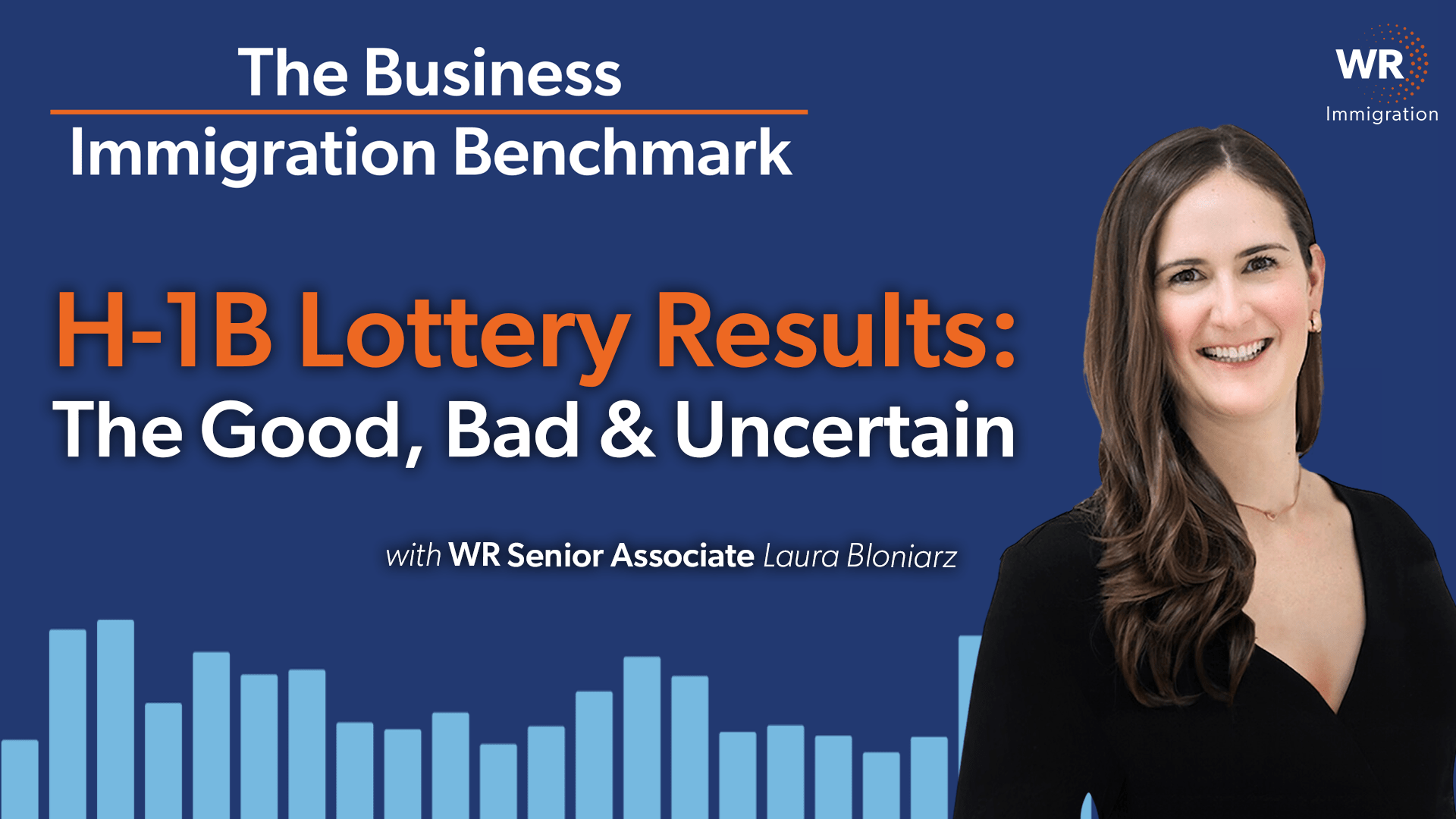Want to stay in the loop? Subscribe here to get the latest updates on the Business Immigration Benchmark podcast and more!
In this week’s episode of “The Business Immigration Benchmark,” I dive into the timely topic of the H-1B lottery—specifically, what made this year’s registration season different. With lottery submissions closed and results anticipated at the time of recording, I break down trends I’ve seen across corporate immigration programs, including a more aggressive approach to who companies are sponsoring and why.
For global mobility professionals navigating uncertainty, this episode provides actionable insights into how technology, compliance, and change management are shaping industry priorities.
Key Takeaways:
Expanding H-1B Registrations Beyond Traditional Candidates
1. More Inclusive Strategies: This year, more companies submitted H-1B lottery entries for candidates they hadn’t traditionally sponsored—like individuals on TPS, asylum, or other independent work-authorized statuses. Why? With ongoing uncertainty around humanitarian immigration programs, employers are stepping up to secure more stable work authorization for these employees.
Non-Traditional Beneficiaries: TN and L-1B employees also saw increased representation in lottery submissions due to concerns about trade agreement volatility and green card delays.
Anticipating a Second Lottery Round
2. Selection Rate Predictions: I didn’t expect a higher selection rate this year – however, my clients saw 40% selection rates! At the time of recording, I had predicted a lower selection rate than last year’s ~30%. Glad to be wrong and pleased for my clients’ selection rate.
Second Round Likely: Due to workforce restructuring and layoffs, not all selected H-1B registrants may ultimately have petitions filed. This could trigger a second lottery round in July. While the chances of being selected in a second round are slim, I do predict a second round in July.
Global Mobility and Long-Term Planning
3. Creative Solutions for Talent Retention: More companies are exploring international assignments as a way to retain key foreign talent amid U.S. immigration bottlenecks. These global assignments are also being integrated into green card strategies, providing employees with productive pathways forward while navigating system delays.
My Parting Thoughts
This year’s H-1B season reflects a deeper shift in how companies think about immigration strategy. From proactively protecting humanitarian visa holders to exploring global assignments, it’s clear that organizations are getting more creative and committed to supporting their foreign national employees. If you’re adjusting your own strategy or looking for ways to stay competitive in the immigration space, I hope this episode gives you some fresh perspective. Catch you next week on The Business Immigration Benchmark!
If you have insights or strategies you’d like to share, feel free to DM me on LinkedIn or submit a question here!


